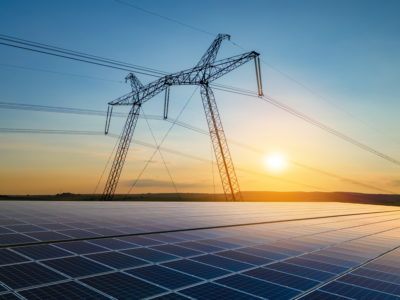Reducing Financing Costs for New Transmission in California
Legal Planet: Environmental Law and Policy 2024-10-31

California will need a significant build-out of new high-voltage transmission lines to meet state goals for renewable energy deployment and a decarbonized grid by 2045, which requires quadrupling its current in-state solar and wind capacity. But if this new infrastructure is paid for solely through electricity rates, it could increase them significantly, when they have already increased roughly 50% over the past three years for investor-owned utility customers.
In response, UC Berkeley Law’s Center for Law, Energy and the Environment (CLEE) is releasing today the policy report Improving Transmission Financing in California: Alternative Models and Policy Strategies to Increase Affordability. It contains a variety of strategies available to policymakers for financing new high-voltage power transmission in California, with the dual goals of 1) reducing costs to ratepayers and 2) accelerating transmission development. The report was developed with the support of Net-Zero California and Clean Air Task Force.
Among the key findings:
- Some form of public-private partnership (P3) could provide significant benefits to deploying lower-cost transmission, due to cost-savings potential and the ability to leverage existing institutions and structures. A number of possibilities and considerations exist, and the form of P3 may depend on the particular transmission line, developers, and other project-specific circumstances.
- Policymakers could endow an existing entity with transmission financing and related P3 authorities, rather than create a new entity. Currently, California has multiple entities with at least some role in transmission. Creating a wholly new public entity, or endowing an existing agency, in California to finance and oversee transmission would entail administrative and procedural changes, which may be more significant for a new public entity.
- State leaders could focus on demonstrating alternative financing arrangements for four to six key transmission regions and lines in the California Independent System Operator’s 20-year transmission outlook that most stakeholders agree are essential. The Governor’s Office could designate a coordinator for high-priority lines and support a process to speed implementation and financing.
- State leaders could minimize risk for the entity or entities owning new transmission lines, including establishing a liability backstop and developing insurance, contract, indemnity, and first loss protection, and other mechanisms, subject to negotiation and legislation.
These and other findings, as well as more detail on selected financing options and their specific challenges, can be found in the new report.
To learn more, register for the CLEE webinar “Financing California’s Transmission Needs” on Wednesday, November 13, from 12:00 – 1:00 p.m. Pacific. Keynote remarks will be provided by:
- Le-Quyen Nguyen, Acting Senior Advisor for Energy for Governor Gavin Newsom
- Cliff Rechtschaffen, California Air Resources Board member and former California Public Utilities Commissioner
In addition, CLEE will discuss the report findings, along with representatives from Net Zero California, Clean Air Task Force, and DH Infrastructure.